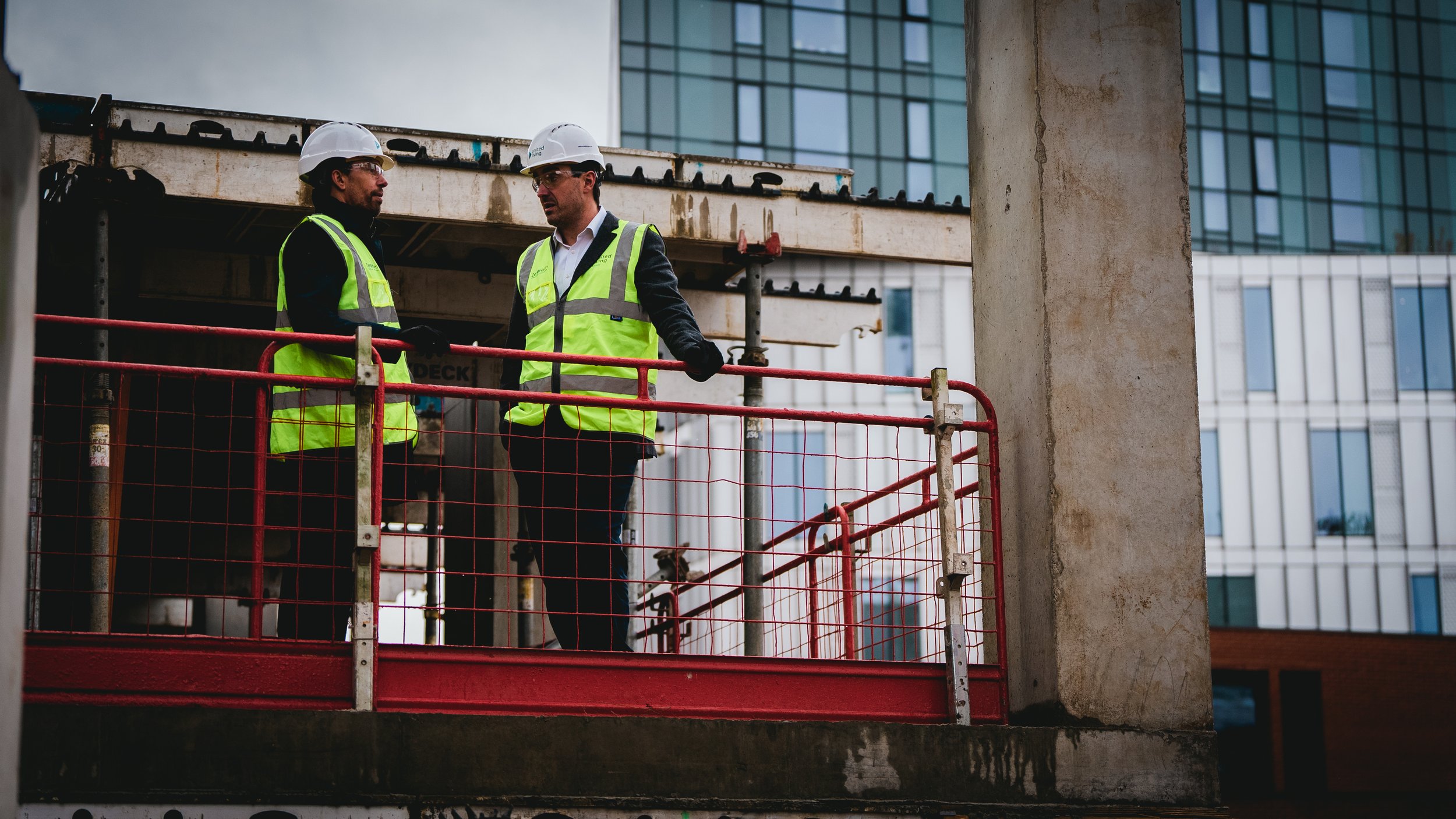Mixed Use Development
When mixed-use developments work, they work for everyone.
Sustainable mixed-use developments are often described as the future of urban regeneration. Dynamic spaces where people can live, work and unwind in close proximity. But in practice, many of these schemes fall short. Why?
Because getting mixed-use right takes more than a good site and a glossy plan. It takes long-term thinking, smart funding models, real partnership and deep local knowledge.
To us, the most successful developments aren’t shaped by trends, they’re shaped by what’s true to a place, its people and its potential.
Here’s what we’ve learned from our work on mixed-use regeneration projects across the UK.
Start with partnership, not paperwork
Anyone can draw up a masterplan, but turning it into a thriving, deliverable scheme takes partnership. The kind that’s built over years, not months.
Successful mixed-use developments are never delivered in isolation, they rely on a network of relationships. Landowners, funders and local authorities. Statutory consultees, professional consultants and occupiers. And most importantly, the communities who live and work nearby. Aligning these from the start is essential.
The most effective partnerships are built on honest communication and a willingness to adapt, as development by nature isn’t static. Timelines move, markets shift and long-term socio-environmental factors require sound consideration, which is why the ability to maintain relationships and adjust where needed matters just as much as technical expertise.
It’s not always easy. But when it’s done well, this approach builds trust, unlocks creativity and allows developments to evolve in step with real needs.
Local knowledge always overcomes copy and paste thinking
There is no one-size-fits-all model for regeneration. Each place has its own rhythm, history and challenge. Any development that ignores that risks becoming a white elephant (something that looks impressive but lacks value or real longevity.)
Before we bring forward a scheme, we ask a few key questions.
What does this place need? What’s missing? What already works? And how can this project support the council’s broader ambitions?
The insight comes from walking the area, listening to local voices and understanding concerns. We get close to the ground and learn what makes a place tick. It’s about real conversations, not tick-the-box research, and it helps us to shape schemes that feel authentic and future proofed, rather than imposing.
Is the route slightly slower? Perhaps. But it creates results that last. Schemes with local credibility draw better support, stronger occupiers and longer-term investment.
Don’t underestimate the power of public realm
Public realm is often treated as a nice-to-have or an optional extra if the budget allows, but we see it differently. When designed with care, infrastructure and open space do more than add polish; they shape how a scheme is used and understood and its long term sustainability.
Good public realm attracts people, supports businesses and builds local loyalty. It’s not just about green space or paths, it’s about connection between buildings, people, the past and the future.
Equally, the use mix has to be viable. This means stress testing funding models, using smart finance structures and finding the right balance of risk and reward. Too often, developers expect the public sector to carry all the regeneration costs while retaining the upside, but that model just isn’t sustainable.
We’ve worked on several projects where creative funding unlocked progress. Homes England support. Layered grants. Joint ventures. We see viability as a design tool, and if the numbers don’t work, the scheme won’t either.
Resilience beats a changing market. Every time.
Change is a constant in property. From Brexit to post-pandemic disruption, recent years have seen more instability than certainty, which naturally leads to caution.
But there’s no “perfect timing” when it comes to regeneration, and often the best moment to act is when others are standing still.
Trusting in local fundamentals takes courage, but it also takes insight. Mixed-use schemes are a balancing act of knowing when to stay the course, back off or push forward. They need patience and a belief in something bigger than short-term returns.
That belief is what drives us. Because when mixed-use works, it works for everyone. For residents, visitors and investors. For students, businesses and the wider community.
For the places we all call home.
Want to talk mixed-use strategy, partnerships or funding models? Contact nick@axis-re.co.uk or russ@axis-re.co.uk to discuss how Axis RE can support your next development.


